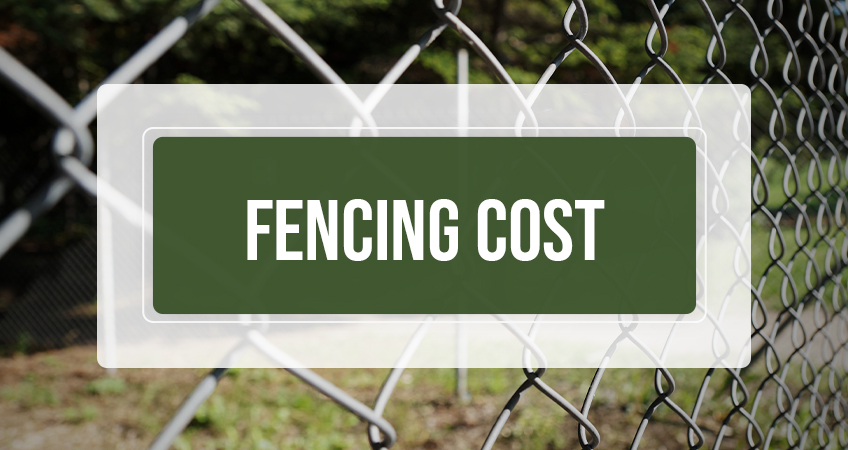You’re standing in your garden, staring at the sad remains of what was once your fence, courtesy of last night’s storm. Or perhaps you’re a new homeowner looking to add some much-needed privacy to your outdoor space. Either way, the question burning in your mind is probably the same: “How much is this going to cost me?”
At ACH Landscapes, we’ve helped countless homeowners navigate the sometimes bewildering world of fencing costs. While we’d love to give you a simple answer, the truth is that fencing cost depends on several factors—from the type of material you choose to the size of your garden and the complexity of the installation.
This comprehensive guide will break down everything you need to know about fencing costs in the UK as of August 2025. We’ll cover different fence types, materials, installation expenses, and those sneaky additional costs that can catch you off guard. By the end, you’ll have a clear picture of what to budget for your fencing project.
Introduction to fencing
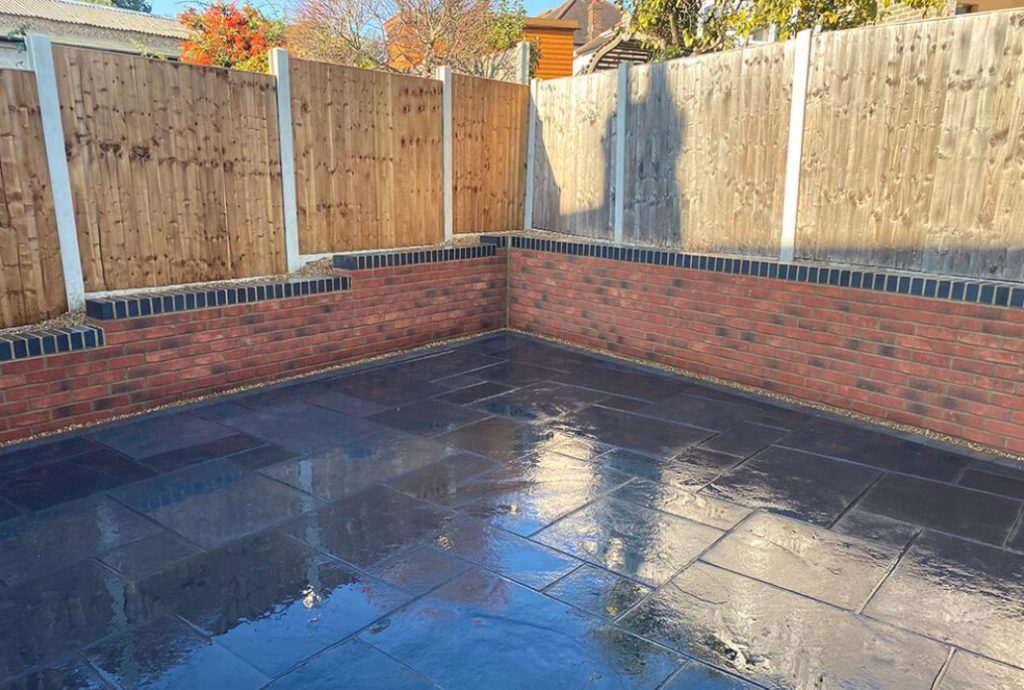
Fencing is more than just a boundary for your garden—it’s a vital feature that brings together security, privacy, and aesthetic appeal in one practical package. Whether you’re looking to protect your garden space from prying eyes, keep pets and children safe, or simply add a stylish finishing touch to your outdoor area, the right garden fence can make all the difference.
Fence panels
When planning to install fence panels, it’s important to understand the key factors that influence the overall fence installation cost. The type of fencing materials you choose—be it classic timber posts, robust concrete posts, or modern composite fencing—will have a significant impact on both the upfront price and the long-term durability of your fence. Labour costs, the total length of your fence, and the condition of any existing fencing also play a crucial role in determining your final budget.
There’s a wide variety of fence panels to suit every taste and requirement. Slatted fence panels offer a contemporary look with their clean horizontal boards, while lap panels and closeboard panels remain popular for their traditional charm and solid construction. For those seeking something a little different, weave fencing and lattice panels can add a decorative touch and enhance the overall aesthetic appeal of your garden.
Gravel boards
Don’t overlook the importance of gravel boards—especially concrete gravel boards—when installing a new fence. These essential components help protect your fence panels from ground moisture, extending their lifespan and keeping your garden fence looking its best for years to come. If you’re replacing old fencing, remember to factor in waste removal, as clearing away old fence panels and posts is a key part of a smooth and cost effective installation.
Fence posts
Choosing heavy duty posts and high-quality fencing materials not only boosts the security and strength of your fence but also ensures it stands up to the unpredictable UK weather. With so many options available, from cost effective lap panels to premium composite fencing, it’s worth taking the time to consider what will work best for your garden, your needs, and your budget.
By understanding the different types of fence panels, fencing materials, and the various factors that affect fencing costs, you’ll be well-equipped to make informed decisions about your new fence. In the sections that follow, we’ll guide you through everything you need to know about fence installation cost, planning permission, and more—helping you create a garden boundary that’s both functional and beautifully tailored to your home.
Factors affecting fencing costs

Before diving into specific prices, it’s important to understand what influences the cost of fencing. Think of it like buying a car—the final price depends on the model, features, and extras you choose.
Costs can vary depending on factors such as the material you select, the size of the area to be fenced, and the complexity of installation.
Type of fence panels
The style and material of your fence will be the biggest factor in determining cost. Timber fencing is a traditional option for homeowners, offering a classic look that suits many properties. A basic wooden panel fence will cost significantly less than a custom-designed metal security fence. From simple post-and-rail options to elaborate wrought iron designs, the variety is enormous.
Materials
Your choice of materials—wood, metal, concrete, composite, wooden posts, or vinyl—will dramatically impact both upfront costs and long-term maintenance expenses. Timber remains the most popular choice for residential properties, but alternatives like composite fencing are gaining ground due to their durability and low maintenance requirements. Composite fencing requires less maintenance and does not rot, unlike wood, which needs regular treatment to prevent decay. When considering post materials, wooden posts are a traditional option but may be less durable than concrete or metal posts, especially in challenging soil conditions.
Size and length
This one’s straightforward: more fence equals more money. Most fence panels have a standard width of 6ft (1.83m), so knowing the standard width is important for planning—measuring your boundary line will give you a good idea of how many panels you’ll need. Don’t forget to account for gates if you need access points.
Fence installation cost
Professional installation typically accounts for a significant portion of your total fencing cost. The complexity of your project—factors like ground conditions, accessibility, and height requirements—will all influence labour expenses.
Additional costs
These are the expenses that homeowners often overlook: removing old fencing, preparing the ground, dealing with sloped terrain, adding gates, and applying finishes. We’ll cover these hidden costs in detail later.
Homeowners can also save money by handling waste removal themselves or by choosing cost-effective installation options.
Average fencing costs in the UK (August 2025)
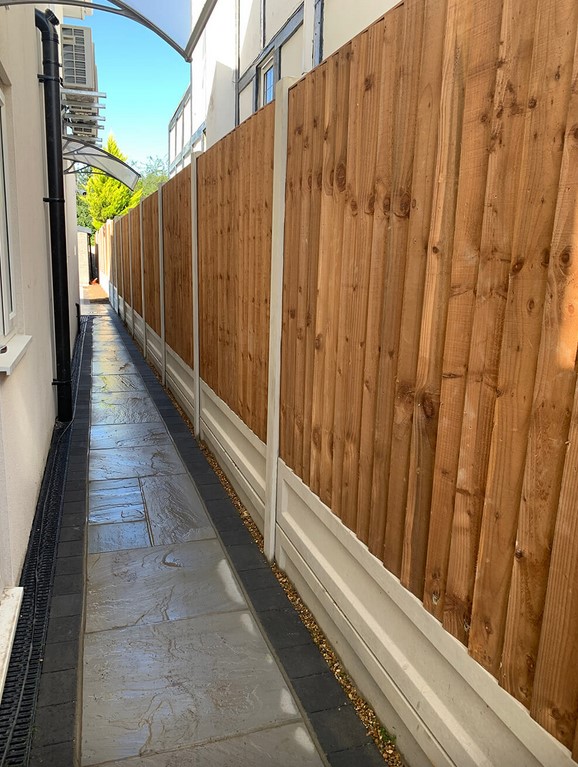
Now for the numbers you’ve been waiting for. Here are the current average costs for fencing materials and installation across the UK:
Note: The prices below are averages and may vary based on your specific project requirements, location, and market conditions.
Material costs:
- Standard fence panel (an individual section of fencing, available in various heights, materials, and styles): £45 per panel
- Fence posts (concrete/timber): £25.50 per post
- Featherboard/close board fence panel: £60 per panel
- Post and rail fencing: £9.50 per foot
- Chainlink fencing: £10 per foot
The average cost of a concrete gravel board per panel is around £18, making it a durable and affordable option to extend the life of your fence panels.
Installation costs:
- 4ft height fence installation: £1,600 (average for typical residential project)
- 6ft height fence installation: £2,200 (average for typical residential project)
These figures represent averages across the UK, and you may find variation depending on your location and local market conditions. London and the South East typically command higher prices than other regions.
Other fencing projects
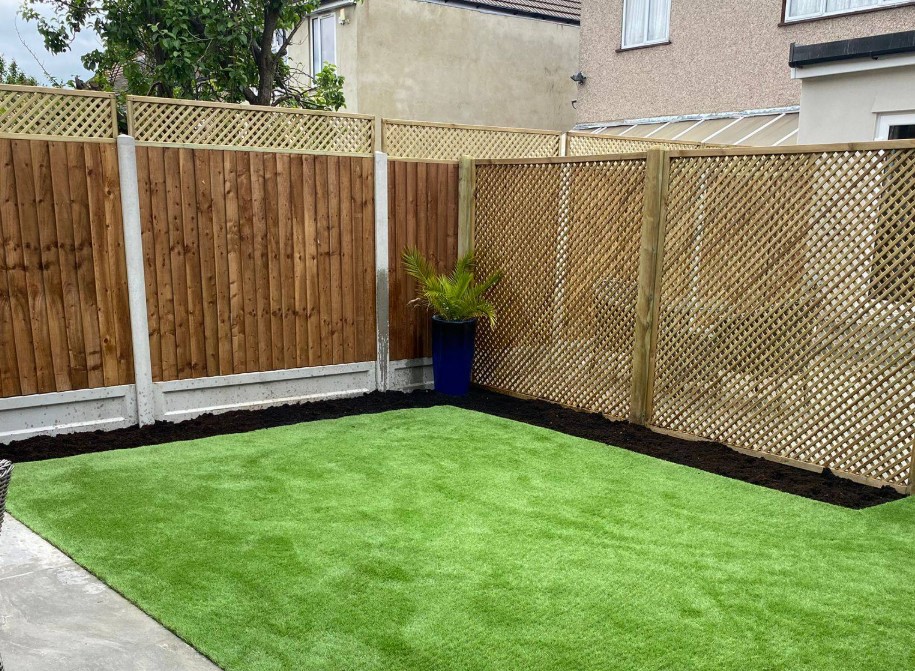
Different types of fencing projects come with their own cost considerations. Here’s what you can expect for various applications:
Garden fencing
Traditional garden fencing focuses on privacy and aesthetics. Choosing an aesthetically pleasing fence can greatly enhance the enjoyment and appearance of your garden. Wooden panel fencing remains the most popular choice, with a wide variety of fencing panels such as lap panels and close board options leading the market. Wooden fences are valued for their traditional appeal and affordability, but they require regular maintenance and can be more vulnerable to weather conditions compared to other materials. For a typical garden boundary measuring 30 metres, you’re looking at approximately £2,000-£3,500 including materials and installation.
Security fencing
If security is your primary concern, you’ll be looking at more robust options like palisade fencing or chain link with security features. Palisade security fencing costs around £30.50 per metre, while heavy-duty chain link systems can range from £15-£25 per metre depending on height and gauge.
Agricultural fencing
For larger properties or rural applications, post and rail fencing offers an economical solution. Stock fencing (woven wire) combined with timber posts provides effective livestock containment at approximately £8-£12 per metre for materials.
DIY vs professional installation
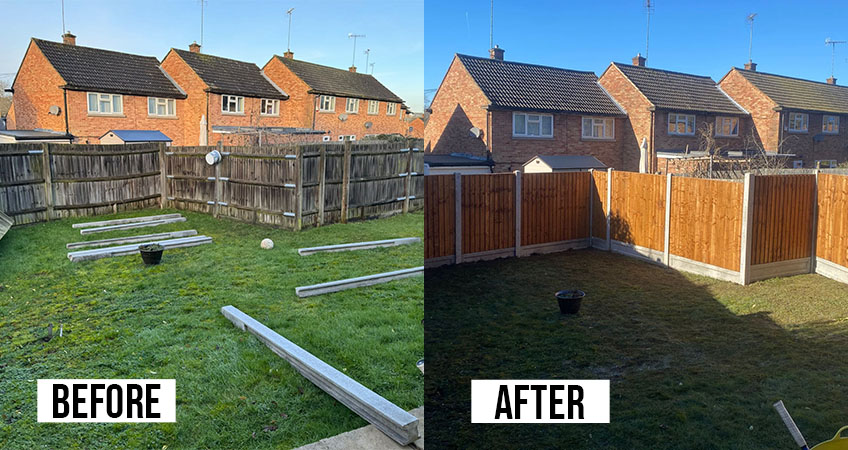
The DIY route can be tempting, especially when you calculate the potential savings. Here’s the breakdown:
Pros of DIY installation:
- Significant cost savings (potentially £1,600-£2,200 in labour costs)
- Complete control over timing and quality
- Sense of personal achievement
- Ability to work at your own pace
Cons of DIY installation:
- Physical demands and potential safety risks
- Need for specialised tools and equipment
- No warranty or insurance coverage
- Risk of costly mistakes
- Time-consuming, especially for beginners
- May not meet building regulations or planning requirements
Pros of professional installation:
- Expert knowledge and experience
- Proper tools and equipment
- Insurance coverage and warranties
- Compliance with regulations
- Faster completion times
- Professional finish quality
- More cost-effective in the long run due to reduced maintenance needs and increased durability
Cons of professional installation:
- Higher upfront costs
- Less control over scheduling
- Need to coordinate with contractors
For most homeowners, professional installation offers better value when you consider the quality of finish, warranty protection, and time savings. However, if you’re handy with tools and have experience with similar projects, DIY can be a viable option for simpler fencing types.
Conclusion
Understanding fencing costs is just the first step in creating the perfect boundary for your property. While the initial investment might seem significant, a quality fence adds value to your home, enhances security, and provides years of privacy and peace of mind.
The key to a successful fencing project lies in choosing the right materials for your specific needs and budget, combined with professional installation that ensures longevity and compliance with regulations.
Ready to get started on your fencing project?
At ACH Landscapes, we’ve been helping homeowners across the UK create beautiful, functional outdoor spaces for years. Our experienced team can guide you through material selection, provide accurate cost estimates, and deliver professional installation that stands the test of time.
Don’t leave your fencing project to chance. Contact ACH Landscapes today for expert advice tailored to your specific requirements and a free, no-obligation quote. Our friendly team is ready to help transform your garden boundary into something you’ll be proud of for years to come.
Call us now or fill out or contact form schedule your free consultation—your perfect fence is just a phone call away.
Frequently asked questions
How long does fence installation take?
Most residential fence installations take 1-3 days, depending on the length and complexity. A straightforward 30-metre run of panel fencing can typically be completed in one day, while more complex projects involving gates, slopes, or difficult access may take longer.
Do I need planning permission for a fence?
Generally, you can install fences up to 2 metres high without planning permission. However, if your property borders a road or public footpath, the limit may be 1 metre. Properties in conservation areas or with restrictive covenants may have additional requirements. Always check with your local planning authority if you’re unsure.
How long will my fence last?
This depends entirely on the material and maintenance. Treated timber fences typically last 15-20 years with proper care, while concrete and metal options can last 25+ years. Composite fencing often comes with 25-year warranties. Regular maintenance significantly extends fence life regardless of material.
What’s the best time of year to install a garden fence?
Spring and early summer are ideal for fence installation. The ground is easier to work with, weather conditions are generally favourable, and you’ll have the full growing season to establish any planted screens. However, professional fencing installers work year-round, and winter installation can sometimes offer cost savings due to lower demand.
Should I inform my neighbours when I install a new fence panel or gravel board?
Yes, it’s always good practice to inform neighbours about fencing work, especially if the fence sits on or near the boundary line. In some cases, you may be able to share costs if the fence benefits both properties. Check your property deeds to establish boundary ownership before proceeding.





